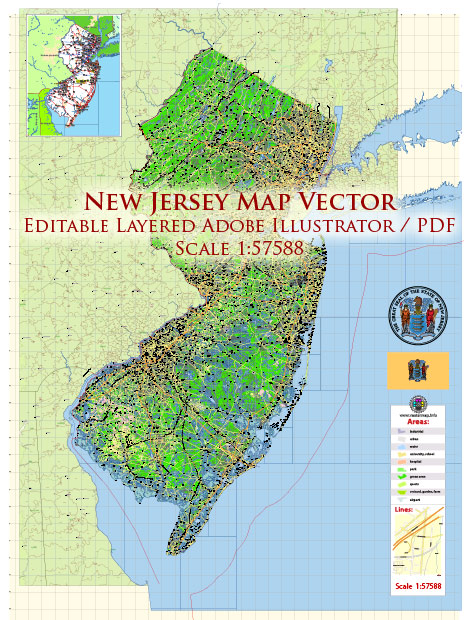New Jersey’s urban development history is a dynamic and complex narrative that reflects the state’s evolution from a largely agrarian society to a densely populated and economically diverse region. Several key factors have shaped the state’s urban landscape, including industrialization, transportation infrastructure, immigration patterns, and economic shifts. Here is an overview of New Jersey’s state history of urban development:
- Colonial Era: New Jersey’s urban development began in the colonial era with the establishment of towns and ports along the Delaware River and the Atlantic Ocean. Cities like Camden and Newark trace their roots back to this period, serving as important trading and transportation hubs.
- Industrial Revolution: The 19th century brought about significant industrialization to New Jersey, particularly in the northern part of the state. Cities like Paterson became known for their textile mills, while Newark and Jersey City developed as industrial centers. The growth of manufacturing led to increased urbanization as people moved from rural areas to work in factories.
- Transportation Infrastructure: The expansion of transportation infrastructure played a crucial role in New Jersey’s urban development. The construction of railroads and later highways facilitated the movement of goods and people, contributing to the growth of cities and suburbs. The development of the Port of New York and New Jersey solidified the state’s importance as a transportation hub.
- Immigration and Population Growth: Waves of immigration in the late 19th and early 20th centuries brought diverse communities to New Jersey’s cities. Cities like Jersey City and Paterson saw an influx of European immigrants, contributing to the cultural and economic vibrancy of urban areas.
- Post-World War II Suburbanization: Like many other parts of the United States, New Jersey experienced significant suburbanization after World War II. The availability of automobiles and the construction of highways, such as the Garden State Parkway and the New Jersey Turnpike, made it easier for people to commute from suburban areas to urban centers for work.
- Urban Renewal and Decline: In the mid-20th century, many urban areas in New Jersey faced challenges such as deindustrialization, population decline, and social issues. Urban renewal projects aimed to revitalize these areas, but they often resulted in the displacement of communities and the destruction of historic structures.
- Revitalization and Redevelopment: In recent decades, there has been a renewed focus on urban revitalization and redevelopment. Cities like Newark and Jersey City have experienced economic and cultural resurgence, with investments in infrastructure, housing, and public spaces.
- Diversity of Urban Environments: New Jersey’s urban landscape is diverse, ranging from the historic charm of cities like Hoboken and Princeton to the modern skyline of Jersey City. Each city has its unique character and challenges, contributing to the overall tapestry of the state.
Overall, New Jersey’s history of urban development reflects the broader trends in American urbanization, with a mix of industrialization, suburbanization, and contemporary revitalization efforts shaping its urban centers. The state continues to evolve, responding to economic, demographic, and cultural changes in the 21st century.


 Author: Kirill Shrayber, Ph.D.
Author: Kirill Shrayber, Ph.D.